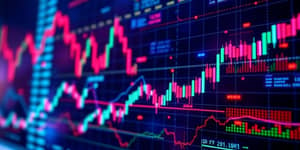
In 2025, exchange-traded funds (ETFs) are not just proliferating—they are honing in on ever more specialized themes. From humanoid robotics to private market access, fund providers are crafting offerings to meet evolving investor demands. This surge reflects both a hunger for innovation and the sheer momentum driving the global ETF industry.
By zeroing in on niche strategies, investors gain exposure to precise growth opportunities while benefiting from the traditional ETF advantages of transparency, liquidity, and cost efficiency. This article explores the record-breaking numbers, the forces propelling this trend, standout new launches, and practical insights for navigating this vibrant landscape.
The first four months of 2025 witnessed a staggering 847 ETF launches worldwide, eclipsing the previous high of 563 in the same period of 2022. After accounting for closures, the industry saw a record-breaking $620.54 billion in net inflows, marking 71 consecutive months of positive fund flows. Such figures underscore a robust appetite across institutional and retail segments for diversified, liquid investment vehicles.
Geographically, the United States led with 319 new products, followed by 270 in Asia-Pacific (excluding Japan) and 116 in Europe. Active ETFs remain a major growth driver, drawing $32.2 billion in inflows in April alone, demonstrating an increasing preference for professionally managed ETFs rather than index-tracking counterparts.
Despite the enthusiasm, fund closures persist—179 products shuttered during the same four-month window—reflecting the competitive landscape and the continuous cycle of innovation and refinement among providers.
Several key dynamics are fueling this shift toward specialized ETFs, reflecting broader market and societal trends.
Advisors identify the top ETF trends for 2025 as a surge in active offerings (28%), flows from mutual funds (26%), growth in tech and AI-themed funds (26%), and renewed crypto interest (23%). This mosaic of forces illustrates why specialized strategies are capturing investor imagination.
At the core, ETFs provide rapid proliferation of thematic ETFs worldwide, allowing individuals and institutions to align capital with transformative trends such as generative AI, blockchain innovation, and climate solutions.
This year’s notable launches exemplify how niche strategies are taking shape in practice.
The KOID ETF marks the first dedicated US vehicle for humanoid robotics, a sector Morgan Stanley forecasts to reach a over 1 billion humanoid robots by 2050 and a $5 trillion market cap. The GPZ offering caters to investors seeking access to private market returns via listed securities, targeting firms that manage private equity, credit, and real estate.
Meanwhile, funds blending generative AI exposure with crypto-assets and alternative yield strategies reflect a keen interest in high-innovation, cross-asset themes. This granular approach helps investors pinpoint specific growth engines rather than broad index bets.
Integrating niche ETFs into a portfolio requires thoughtful consideration. Below are practical steps to optimize your approach:
By rigorously evaluating these factors, you can harness the potential of specialized ETFs while maintaining a balanced portfolio structure. Remember that niche funds often carry higher volatility and may require periodic rebalancing.
While niche ETFs offer exciting opportunities, they also introduce complexities. The proliferation of specialized products can lead to overlapping exposures, making it crucial to monitor overall portfolio concentration.
Regulators are paying closer attention to thematic and alternative funds, demanding greater transparency and consistent benchmarking. Investors should stay informed about policy shifts, such as crypto ETF approvals, which can swiftly alter risk profiles and trading dynamics.
Moreover, commodity, leveraged, and inverse ETFs carry unique risk characteristics that may not suit all investors. Careful due diligence, combined with professional advice when needed, helps navigate these potential pitfalls.
2025’s record global ETF launches underscore a pivotal evolution in asset management: a move toward ever more specialized, outcome-driven strategies. Whether tapping into the frontier of humanoid robotics or unlocking private market returns, investors now have unparalleled tools to align their capital with cutting-edge opportunities.
By combining innovative product innovation with disciplined portfolio practices, investors can chart a course through this dynamic landscape. As the ETF universe continues to expand, those who embrace specialization with clarity and caution are poised to capture the full benefits of this transformational trend.
References













